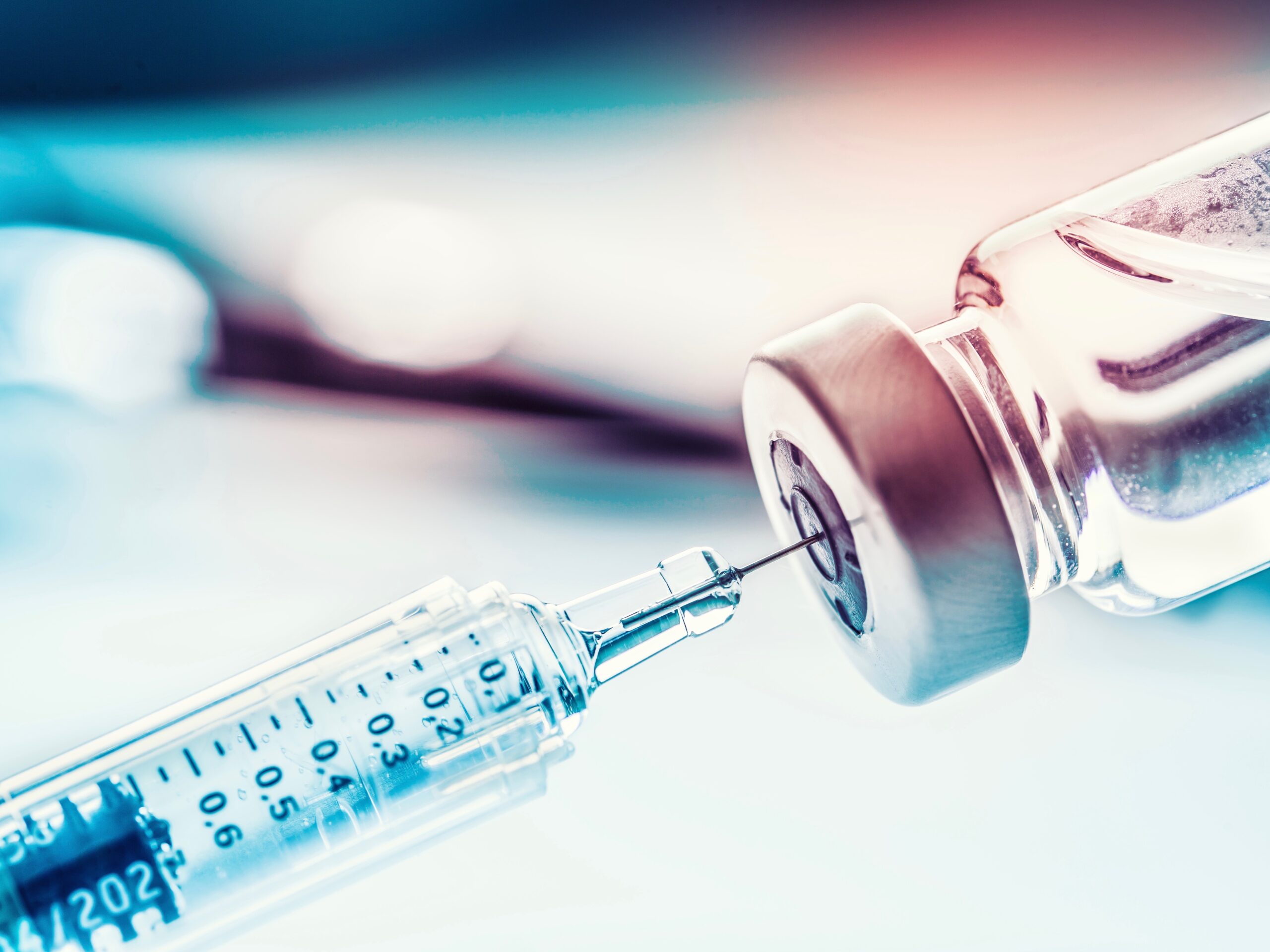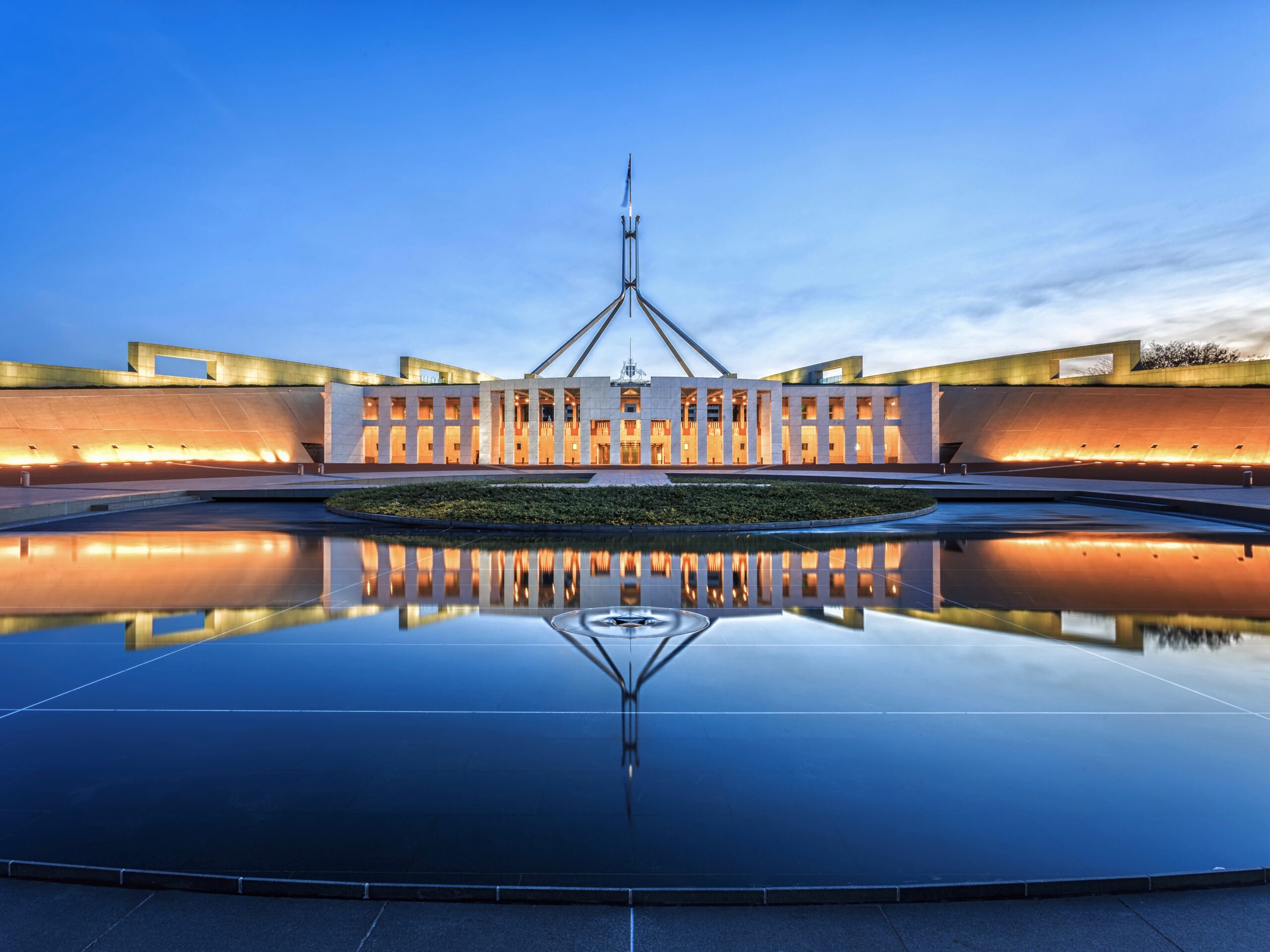Research Australia’s submission to the review of the National Medicines Policy has made the case for researchers to be formally recognised as partners in the Policy alongside government, industry, healthcare providers and consumers. We have also supported the expansion of the policy to include vaccines and new health technologies. Our submission provides examples of how the Policy can be more consumer-centric, by making better use of the data already collected to understand consumer behaviour in relation to medicines.
Changes to MRFF investments and disbursements
The Investment Funds Legislation Amendment Bill 2021 will:
-
- change the way the MRFF is invested,
- allow the annual disbursements from the MRFF to be set for a period of up to five years, and
- change the period for the MRFF Strategy and Priorities to six years and 3 years respectively (currently 5years and 2 years.)
In its submission to the The Senate Finance and Public Administration Legislation Committee Inquiry, Research Australia has welcomed the changes, which have the potential to increase the funds available from the MRFF to fund research and innovation and provide greater stability. Research Australia has urged the MRFF Act be amended to make it explicit that the capital value of the MRFF is to be maintained in the long term.
Research Australia’s submission is available here.
Sector support for Patent Box
As the national peak for the whole of the health and medical research pipeline, Research Australia was pleased to convene a broad cross-section of health innovators including Medicines Australia, AusBiotech, and the BioMelbourne Network to develop a unified position on the Patent Box tax treatment. Together we have issued the following joint statement.
Joint Statement of support for an Australian Patent Box
Australia’s health innovators support the introduction of a Patent Box, and we welcome this initiative by the Australian Government. With the right policy settings, a Patent Box will ensure Australian discoveries in health are developed here, ensuring Australia captures the opportunity for new industries and jobs in health innovation. We look forward to working with Treasury to ensure the design of the patent box adequately incentivises Australian health innovators to develop and manufacture their ideas onshore.
This collective statement is made by Research Australia, Medicines Australia, AusBiotech, BioMelbourne Network and the Medical Technology Association of Australia. In short, we represent a broad cross-section of health innovators. Our combined membership conducts most health-related research and development (R&D) activities in Australia with the objective of discovering and delivering better health outcomes and an enhanced health system for Australian patients and the world. This membership includes universities, research institutes, consumers, and small, medium and large companies.
What is a Patent Box?
A Patent Box is a tax concession that provides a lower tax rate for income derived from certain forms of intellectual property (IP), typically patents. The policy goal of patent boxes is to promote R&D and the commercialisation of IP.
Key Points
- We strongly support the introduction of a Patent Box in Australia. Many of us have advocated for the introduction of a Patent Box for several years.
- We acknowledge the need for the design of the Patent Box to be consistent with the OECD’s Base Erosion and Profit Sharing (BEPS) Action 5 Minimum Standard.
- The UK’s patent box provides a model for Australia which is superior in many ways to the model proposed in the Australian Treasury’s Discussion Paper.
- The Government should establish an expert working group with industry representation to support the design and implementation of the Patent Box.
Download the joint statement here.
Research Australia will continue to work with the Government and the Treasury to support the further design and implementation of the patent box.
Research Australia’s submission in response to the Treasury consultation is available here.
Research Australia monitoring important new MRFF legislation
The Government introduced the Investment Funds Legislation Amendment Bill 2021 into Parliament on 25 August. If passed, it will, among other things, fix the amount of funding disbursed from the MRFF for five years at $650 million per annum. At the end of the five-year period, the investment performance of the MRFF will be assessed to determine if sufficient earnings have accumulated over the period to raise the annual rate of disbursement. This five-year review period will become a permanent feature of the MRFF.
The MRFF 10-year Investment Plan introduced by the Government in the 2019 Budget has allocated roughly $550 million per annum over the period to 2027-28. The proposed legislative change will allow these commitments to be met, while providing approximately $100 million per annum for new commitments and programs.
This change is about reducing the volatility in MRFF disbursements that arises because of the link to annual investment returns. This volatility caused the Government to tip in $175 million to MRFF disbursements in December last year to keep the MRFF 10-year Plan on track.
Research Australia will be closely monitoring performance of the MRFF and continuing to advocate for fund growth to mirror the growth of the health and medical research sector. While fixing the disbursements, as is proposed by the legislation, provides certainty as to how much we can expect to see disbursed from the MRFF every year, we are seeking clarity as to whether this amount will be indexed. At a bare minimum, the MRFF should keep pace with inflation. Research Australia members remain concerned that other key funding streams like the ARC and NHMRC are not indexed to CPI, meaning they don’t keep pace with inflation and, in real terms, are funds in decline.
The Senate Finance and Public Administration Legislation Committee is undertaking an Inquiry into the Bill and is due to report back to the Senate by 14 October.
For further information or to contribute to Research Australia’s submission, please contact Lucy Clynes, General Manager at lucy.clynes@researchaustralia.org
A patent box tax concession for Australia
Research Australia welcomed the Government’s announcement in the May 2021 Budget that it would introduce a patent box tax concession for the medical and biotechnology sector. As part of the further development of this proposal, the Australian Treasury has issued a consultation paper, outlining the key features. Research Australia’s response addresses several major concerns with the proposal including the focus on incentivising licensing but not manufacturing, and limiting eligibility to patents granted in Australia.
We are working with our membership and other key stakeholders across the sector, and look forward to engaging further with Treasury as the development of the patent box continues.
Research Australia’s submission is available here.
Research Australia responds to National Data Strategy Consultation
The Department of Prime Minister and Cabinet is responsible for developing a National Data Strategy to guide all of the Government’s initiatives in relation to data. Research Australia was invited to comment on a high level outline of the principles and topics for the strategy, as the first stage of the Strategy’s development.
Our response has emphasised the importance of building social licence for the greater use of data. We have also highlighted the need to increase the capacity of the APS and Government agencies to share data securely and safely, which is is not currently addressed as part of the strategy. The submission also draws attention to the need to work with State and Territory Governments to increase the sharing and linkage of datasets across the jurisdictions.
A new Mental Health and Wellbeing Act for Victoria
Research Australia has responded to the Victorian Government’s proposal for a new Mental Health and Wellbeing Act. We have proposed that it adopt the following as principles for service design and delivery:
-
- New treatments and services are evaluated for their relative clinical and cost effectiveness and user acceptability, and where found to be more efficacious than existing treatments, are made available rapidly to all people who could benefit;
- Existing treatments and services are evaluated for their relative clinical and cost effectiveness and user acceptability, and discontinued swiftly (and replaced) where they are proven to be less efficacious than alternative treatments;
- Promoting the importance of research to achieving the best possible mental health and wellbeing;
- Supporting people with lived experience, their families and carers, and the mental health workforce to co-design and participate in research;
Research Australia’s submission is available here.
Championing research in Primary Care
The Primary Health Reform Steering Group has been charged by the Australian Government with assisting the development of a 10 year Plan for Primary Care. Research Australia has used its submission to the Group’s Discussion Paper to make the case for a greater role for research in the new 10 year Plan.
Research Australia welcomes the Plan’s recognition of the key role research can and must play if reforms are to be achieved. Research Australia has argued for research to be integrated onto the system and to be informed by primary care practitioners (including nurses and midwives, allied health and general practitioners) and patients and carers.
As the national peak body for health and medical research, Research Australia has included case studies from its members of relevant primary care research that demonstrates the expertise available in Australia to support implementation of the Steering Group’s Plan.
Research Australia’s submission is available here.
Supporting further research in mitochondrial donation
Research Australia’s submission to the Senate Inquiry into the Mitochondrial Donation Law Reform (Maeve’s Law) Bill 2021 has endorsed the cautious and rigorous approach the legislation takes to permitting research into the development of mitochondrial donation techniques. The approach of initially allowing mitochondrial donation as part of a clinical trial is an appropriate recognition of the stage of development of this technology. It ensures that mitochondrial donation will only occur with the informed consent of participants and in a highly regulated environment.
Read Research Australia’s submission.
The Senate Committee tabled its report in the Senate on 18 August. Read the report.
The legislation was passed by the Parliament on 30 March 2022.
Budget Update 2021
Summary
The economic impact of COVID-19 continues to dominate the Australian Budget, with tonight’s Budget, the second handed down in just seven months. Like the last one, this is a big spending Budget, but the focus has shifted from providing immediate stimulus to longer term recovery and Australia’s future prosperity. In the health sector, policy reform is focused on aged care and mental health.
Apart from COVID, the biggest health issue the Australian Government has had to grapple with in the last 12 months is aged care. The Royal Commission into Aged Care Quality and Safety provided the Government with 148 recommendations earlier this year. Until tonight, the Government had not provided a substantial response to the report.
This Budget outlines an additional $17.7 billion over five years, seeking to address the needs of aged Australians living at home and those in residential care. This equates to around half of what is called for overall in the Royal Commission’s Final Report. The Prime Minister’s press release states the Government has accepted 126 of the 148 recommendations, we are awaiting the Government’s detailed response to the Royal Commission – particularly the recommendations for dedicated funding for aged care and ageing research. The proposals from the Royal Commissioners in relation to funding for innovation and research have not been funded in this Budget.
Mental Health has also been under the spotlight, including the impact of COVID-19 on mental health. The Productivity Commission provided the Government with a report last year on what could be done to improve mental health, and earlier this year the Department of Health and Ageing consulted on what measures from the report should be implemented, and when.
Tonight’s budget provides $2.3 billion over four years from 2021-22 for the National Mental Health and Suicide Prevention Plan, including initiatives to be progressed with states and territories for a new national agreement on mental health and suicide prevention. The Government has indicated that it has accepted all the recommendations of the Productivity Commission Report on Mental Health and that the funding announced tonight is only phase one of its response. The only research specific funding announced as part of this package is establishment of an Eating Disorders Research Centre as part of a $26 million package of funding for eating disorders. Further funding for research-related aspects of the Productivity Commission’s recommendations may follow in future budgets. There is $117.2 million for data collection, in part to establish the evidence base for reforms. We will be seeking the advice of key mental health research experts to understand how this data can inform continuous, evidence-based improvement in mental health care for Australians.
While Preventative Health has gained attention from the Government in the last couple of years, the National Preventive Health Strategy is still very much a work in progress and there is only very limited additional funding for preventive health in tonight’s Budget. There is $1.9 million in 2021-22 for preventive health research and scoping activities, including a national health literacy strategy, to inform the National Preventive Health Strategy. Research Australia has previously advocated the need to improve health literacy (and digital health literacy) as a key measure to address health inequity and enable all Australians to better use technology to manage their health.
One of the key lessons from the COVID-19 pandemic is that we have become overly reliant on global supply chains for vital materials. This drove a new focus in last year’s Budget on manufacturing, with the announcement of $1.3 billion over five years from 2020-21 for the Modern Manufacturing Initiative. While the Government seems satisfied this is enough, Research Australia believes more needs to be done, and has proposed raising annual Government spending on R&D to 0.75% of GDP, setting a target for Australia to become a net exporter of pharmaceuticals by 2035, and using the Government’s influence as a key buyer of products and services to boost Australian innovation.
A key measure in this regard is a patent box; a tax deduction provided to companies that manufacture in Australia using Australian developed IP (patents). The patent box will only apply to income derived from Australian medical and biotechnology patents, with consideration to be given to the clean energy sector. It provides a concessional effective corporate tax rate of 17 per cent, with the concession applying from income years starting on or after 1 July 2022. Such a scheme has operated in the UK for many years and is designed to support high value manufacturing in Australia, complementing the R&D Tax Incentive. Research Australia has been a long-term advocate of patent box tax treatment, along with CSL and others in our sector, and this is a significant win for health and medical research.
Much has been said recently about mRNA manufacture of vaccines and therapeutics, with the Victorian and NSW Governments both announcing support and Victoria proposing to invest $50 million. In the Budget tonight the Government has announced that it, too, is acting. It will provide an undisclosed amount of funding (commercially sensitive) to the Department of Industry, Science, Energy and Resources to work with the Department of Health to develop an onshore mRNA vaccine manufacturing capability in Australia. Research Australia called for such a commitment from the Government in our Pre-Budget Submission and we have been calling for this facility privately and publicly, to encourage this sovereign capability .
While the MRFF funding proceeds as outlined in the Government’s MRFF 10 year Plan, the funding to the NHMRC’s Medical Research Endowment Account continues to decline in real terms.
Medical Research Future Fund
Funding from the MRFF
The MRFF reached the target of $20 billion of capital in August 2020. Tonight’s Budget sees this balance maintained over the forward estimates.
Forecast spending from the MRFF remains largely as expected over the forward estimates. While only $455 million is available from the MRFF to fund research and innovation in 2021/22 due to lower-than-expected investment returns, the Government is maintaining spending this financial year by providing an additional $175 million for MRFF funding from consolidated revenue (announced in the December 2020 mid-year budget). At this stage the Government expects the investment returns to recover this financial year, with $650 million available to fund medical research and innovation in 2022/23.
MRFF expenditure
| $m. | 20-21 | 21-22 | 22-23 | 23-24 | 24-25 |
| MRFF Funding 2021 Budget | 579.9 | 455.0 | 650.0 | 650.0 | 650.0 |
NHMRC and ARC Funding
In Research Australia’s Pre- Budget Submission and our Pre-Election Statement we continue to call for increases in funding for the NHMRC and ARC’s research programs. This Budget sees both schemes continue to decline in real terms, which is of genuine concern to the health and medical research community.
NHMRC Programs
The 2021/22 Budget reveals funding for the NHMRC’s programs continuing to grow very slightly, and only slightly faster than was forecast in last year’s budget. The increase in this financial year is 1,1%, with annual increases of around 1% thereafter. This is lower than the forecast CPI of 3.5%% for 2020-21 and CPI of between 1.75% and 2.5% expected in subsequent years. In effect, NHMRC funding continues to decline in real terms, as it has done for many years now. Research Australia remains concerned about this deficit because research and its outcomes is a long-term commitment.
NHMRC MREA Funding
| $m. | 20-21 | 21-22 | 22-23 | 23-24 | 24-25 |
| Funding to MREA
2021 Budget |
853,864 | 863,266 | 875,362 | 887,588 | 899,124 |
| Funding to MREA
2020 Budget |
853,864 | 862,412 | 872,770 | 884,960 | N/A |
ARC Programs
The Australian Research Council’s Funding Programs are critical to Australian publicly funded research including to the life sciences and medical technologies.
Over the forward estimates, the funding to the ARC for the Discovery Program increases slightly each financial year and while higher than in last year’s Budget, the funding is at significantly lower levels than forecast in the 2019 Budget. In real terms funding to the Discovery Program declines over the forward estimates. Again, a cause for concern.
| $m. | 20-21 | 21-22 | 22-23 | 23-24 | 24-25 |
| Discovery 2021 Budget | 483,272 | 489,188 | 494,922 | 501,162 | 509,432 |
| Discovery 2020 Budget | 483.272 | 487.016 | 487.860 | 490.610 | |
| Discovery 2019 Budget | 513.542 | 525.537 | 538.350 | N/A |
The ARC Linkage Program has been singled out by the Government as an important component of Australia’s innovation system, and it was announced that from 1 July 2016 the Program would be open to continuous applications and decision making would be fast tracked.
Funding over the forward estimates is higher than forecast in last year’s budget, but future years fail to keep pace with inflation.
| $m. | 20-21 | 21-22 | 22-23 | 23-24 | 24-25 |
| Linkage 2021 Budget | 323.166 | 325.454 | 329.948 | 334.109 | 339.622 |
| Linkage 2020 Budget | 322.181 | 323.871 | 325.240 | 327.074 | N/A |
| Linkage 2019 Budget | 288.788 | 295.246 | 301.741 | N/A | N/A |
While not funding ‘medical and dental research’, the ARC Linkage program remains important to the health and medical research and innovation sectors.
Research Support
In addition to providing funding for the ARC Linkage Program, the Department of Education and Training also provides funding to universities to help cover the indirect costs of research.
In last year’s Budget, the Government used the Research Support Program to provide a vital injection of $1 billion into higher education research in the current financial year. No further injection is provided in this year’s Budget and funding in is actually lower than was forecast in the 2019 Budget.
Research Support Program
| $m. | 20-21 | 21-22 | 22-23 | 23-24 | 24-25 |
| 2021 Budget | 1918.298 | 930.659 | 942.775 | 958.326 | 974.143 |
| 2020 Budget | 1918.298 | 926.490 | 929.270 | 938.107 | N/A |
| 2019 Budget | 920.573 | 941.748 | 962.455 | N/A | N/A |
| 2018 Budget | 1,018.879 | 1,042.302 | N/A | N/A | N/A |
Funding for the indirect costs of research funded by the MRFF is now provided from the Research Support Program. With the MRFF providing hundreds of millions of dollars in funding to universities over the next few years, beyond this financial year, a substantial increase in the Research Support Program is needed just to maintain the levels of research support funding for research projects at their current already inadequate level. The cuts to the Research Support Program beyond the one-off boost in 2020-21 represent a real and continued threat to the capacity of our universities to undertake vital health and medical research.
The issue of indirect research costs remains unresolved for the whole health and medical research sector and indeed publicly funded research more broadly. Research Australia continues to call for a whole of government approach to the issue of funding indirect research costs. Research Australia proposes that the Chief Scientist lead a review of the funding of indirect research costs to establish a sustainable and equitable funding program. In the short term, the pool of funding for the Research Support Program must be increased substantially.
Research Training
The Research Training Program (RTP) provides funding to universities to support higher degree by research students (mostly PhDs). Funding for the RTP also declined in absolute terms between the 2019 and 2020 Budgets, and have only partly recovered in this year’s Budget.
Research Training Program
| $m. | 20-21 | 21-22 | 22-23 | 23-24 | 24-25 |
| 2021 Budget | 1054.981 | 1069.182 | 1083.160 | 1100.967 | 1119.137 |
| 2020 Budget | 1054.981 | 1064.392 | 1067.585 | 1077.738 | N/A |
| 2019 Budget | 1057.595 | 1081.921 | 1105.710 | N/A | N/A |
Industry PhDs
The Department of Industry will provide $1.1 million over two years from 2020-21 to create new employment pathways for students and boost financial incentives for universities to enrol students in ‘Industry PhDs’. This measure will introduce an additional weighting in the Research Training Program funding formula for PhD students who undertake an industry placement.
Research Commercialisation
In last year’s Budget the Government committed funding for a scoping study for a University Research Commercialisation Scheme to better translate and commercialise university research outputs. The development of the Scheme is still in train and there is no funding for the Scheme in this year’s Budget. It looks like this might have to wait until next year. Research Australia remains actively engaged in consultation with the Department of Prime Minister and Cabinet on this Scheme.
CRC Program
Funding forecasts for the CRC Program reflect a shift in some funding between 2019-20 and 2020-21. Beyond that, they are slightly lower over the forward estimates.
CRC Program $million
| $m. | 20-21 | 21-22 | 22-23 | 23-24 | 24-25 |
| 2021 Budget | 222,777 | 189,980 | 197,815 | 191,042 | 193,807 |
| 2020 Budget | 234,168 | 189,040 | 186,378 | 188,599 | N/A |
| 2019 Budget | 187,356 | 192,239 | 191,223 | N/A | N/A |
The CRC Program is important to health and medical research and innovation with about one third of the CRCs funded over the life of the program being health related.
Conclusion
Research Australia will continue to provide analysis and comment in the coming days and weeks as well as seek further input from across the membership for your reactions and insight into the policy and funding announced for our sector; and how it affects or enhances your research and related activities as a result.
Ends …..










